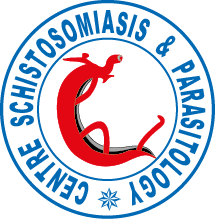A neotropical snail host of Schistosoma mansoni introduced into Africa and consequences for the schistosomiasis transmission Biomphalaria tenagophila in Kinshasa (Democratic Republic of Congo)
Abstract
Malacological surveys carried out in the early 1970s in water bodies of the Kinshasa area, Lower Zaire (Democratic Republic of Congo), showed the appearance of a Biomphalaria species which was identified as Biomphalaria camerunensis. In 1976, other surveys confirmed the presence of the species in several sites and showed numerous infected snails with Schistosoma mansoni, demonstrating for the first time an active transmission of the parasite responsible of the intestinal schistosomiasis in this area. The most recent malacological sampling was carried out by one of us in 1994 in Mangungu River and revealed the presence of apparently the same snail species. However, conchological, anatomical and molecular studies showed that this snail may be considered as an introduced neotropical species, B. tenagophila. To our knowledge, this is the second example of the introduction of a neotropical snail host of schistosomes into Africa.
